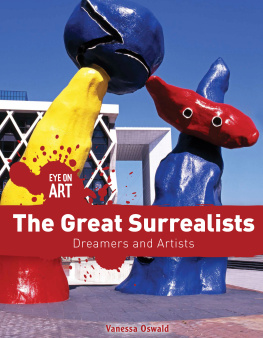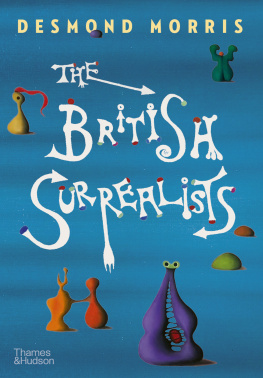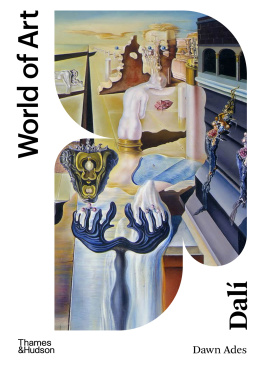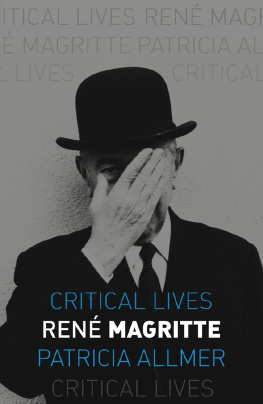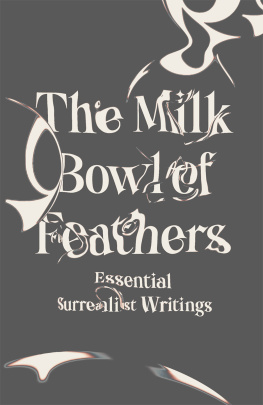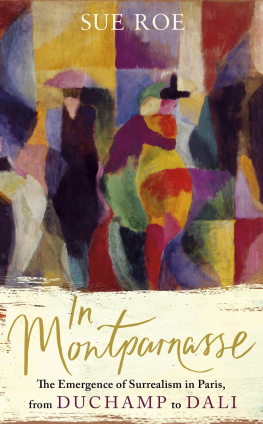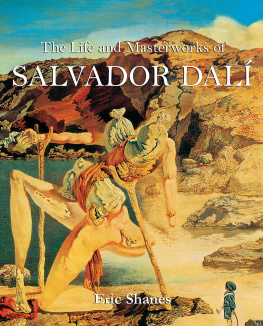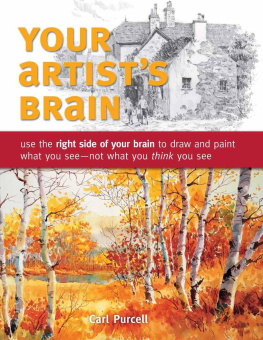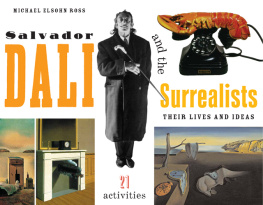Gale and Greenhaven Press are registered trademarks used herein under license.
All new materials copyright 2019 Lucent Press, an Imprint of Greenhaven Publishing, LLC.
All rights reserved. No part of this book may be reproduced in any form without permission in writing from the publisher, except by a reviewer.
Names: Oswald, Vanessa, author.
Title: The great surrealists : dreamers and artists / Vanessa Oswald.
Description: New York : Lucent Press, 2019. | Series: Eye on art | Includes bibliographical references and index.
Identifiers: LCCN 2018027539 (print) | LCCN 2018029118 (ebook) | ISBN 9781534566064 (eBook) | ISBN 9781534566057 (library bound book) | ISBN 9781534566040 (pbk. book)
Subjects: LCSH: Surrealism--Juvenile literature.
Classification: LCC N6494.S8 (ebook) | LCC N6494.S8 O89 2019 (print) | DDC 700/.41163-dc23
LC record available at https://lccn.loc.gov/2018027539 Printed in the United States of America
CPSIA compliance information: Batch #BW19KL: For further information contact Greenhaven Publishing LLC, New York, New York at 1-844-317-7404.
Please visit our website, www.greenhavenpublishing.com . For a free color catalog of all our high-quality books, call toll free 1-844-317-7404 or fax 1-844-317-7405.
Introduction
Defining Surrealism
Chapter One
Early Surrealism
Chapter Two
Essential Surrealists
Chapter Three
Artists Influenced by Surrealists
Chapter Four
Art Advocating Social Change
Chapter Five
Modern Surrealism
W hat is art? There is no one answer to that question. Every person has a different idea of what makes something a work of art. Some people think of art as the work of masters such as Leonardo da Vinci, Mary Cassatt, or Michelangelo. Others see artistic beauty in everything from skyscrapers and animated films to fashion shows and graffiti. Everyone brings their own point of view to their interpretation of art.
Discovering the hard work and pure talent behind artistic techniques from different periods in history and different places around the world helps people develop an appreciation for art in all its varied forms. The stories behind great works of art and the artists who created them have fascinated people for many years and continue to do so today. Whether a person has a passion for painting, graphic design, or another creative pursuit, learning about the lives of great artists and the paths that can be taken to achieve success as an artist in the modern world can inspire budding creators to pursue their dreams.
This series introduces readers to different artistic styles, as well as the artists who made those styles famous. As they read about creative expression in the past and present, they are challenged to think critically about their own definition of art.
Quotes from artists, art historians, and other experts provide a unique perspective on each topic, and a detailed bibliography is provided as a starting place for further research. In addition, a list of websites and books about each topic encourages readers to continue their exploration of the fascinating world of art.
This world comes alive with each turn of the page, as readers explore sidebars about the artistic process and creative careers. Essential examples of different artistic styles are presented in the form of vibrant photographs and historical images, giving readers a comprehensive look at art history from ancient times to the present.
Art may be difficult to define, but it is easy to appreciate. In developing a deeper understanding of different art forms, readers will be able to look at the world around them with a fresh perspective on the beauty that can be found in unexpected places.
A man with his long nose fit perfectly into a pipe, a lobster telephone, a pair of boots that turn into feet, and a fish with a womans legs on the beach: These are some of the most familiar images in Surrealism, a movement in modern art that hit its peak just under a century ago. The Surrealist images painted by such artists as Salvador Dali, Rene Magritte, Max Ernst, Joan Miro, Andre Masson, Man Ray, and others have continued to startle, bewilder, and fascinate art lovers for decades.
Today, Surrealism knows no boundaries, and the movements impact can be recognized in various artistic outlets. Contemporary artists, who are inspired by the early Surrealists, have learned from the foundational elements of
Surrealism. They have absorbed this knowledge, allowing it to transform their own work to speak on behalf of their own unusual ideas. As a result, they create their own brands of Surrealist art, and just like their predecessors, with these new ideas and exciting artistry, they too will inspire future generations.
Apollinaire and Freud
Surrealism is a word coined in 1917 by the French poet Guillaume Apollinaire to describe a production of the ballet Parade. The ballets producers had asked Apollinaire to write the text that appeared in the programs handed to audience members. It fell upon his shoulders to prepare the unsuspecting ballet lovers for the unusual performance that awaited them.
The ballet featured set designs and costumes by Spanish artist Pablo Picasso and the music of French composer Erik Satie. The ballet was light and whimsical, telling the story of circus performers and featuring jazzy music that was made by such unusual instruments as a typewriter, siren, pistol, and foghorn. The costumes and set designs were hardly what anyone would expect to see on the ballet stage. Some of the costumes were made of cardboard, while the set designs, which depicted a 19th century street carnival, reflected Picassos interest in abstract art. To sum up this odd combination of the real and unreal, Apollinaire described the ballet as surrealisme or, in English, super realism.
Surrealism describes an image in which the unusual is depicted as a part of everyday life. However, true Surrealism involves much more than just a visual image.
Surrealists were heavily influenced by Sigmund Freud, the founder of psychoanalysis, who suggested that humans are driven more by subconscious (something that is in the part of the mind that a person is not aware of) thoughts than conscious thoughts. Psychoanalysts such as Freud and Carl Jung suggested that the subconscious is a dark place that harbors inner drives, demons, frustrations, fears, and obsessions. Further, Jung believed that some universal thoughts are shared by all human minds, which explains how societies and cultures far removed from one another develop similar beliefs, rituals, and symbols. Jung suggested the subconscious holds the key to linking all human thought. In addition, Freud and Jung believed the subconscious remains active during sleep, manifesting itself in the form of dreams that often contain symbols. For example, a man who dreams his house has been robbed may, in his waking hours, be stealing from someone else. Perhaps his thefts are real; for example, he may be helping himself to the cash register at his place of employment. Maybe his thefts are not quite as obvious; for example, he may be taking a longer lunch at work. Nevertheless, in his subconscious mind, he believes he is stealing from his employer. His shame has manifested itself in the form of a dream in which he is the victim of a theft. In his 1900 book The Interpretation of Dreams, Freud said, If I dream I am frightened of robbers, the robbers are certainly imaginary, but the fear is real.1

